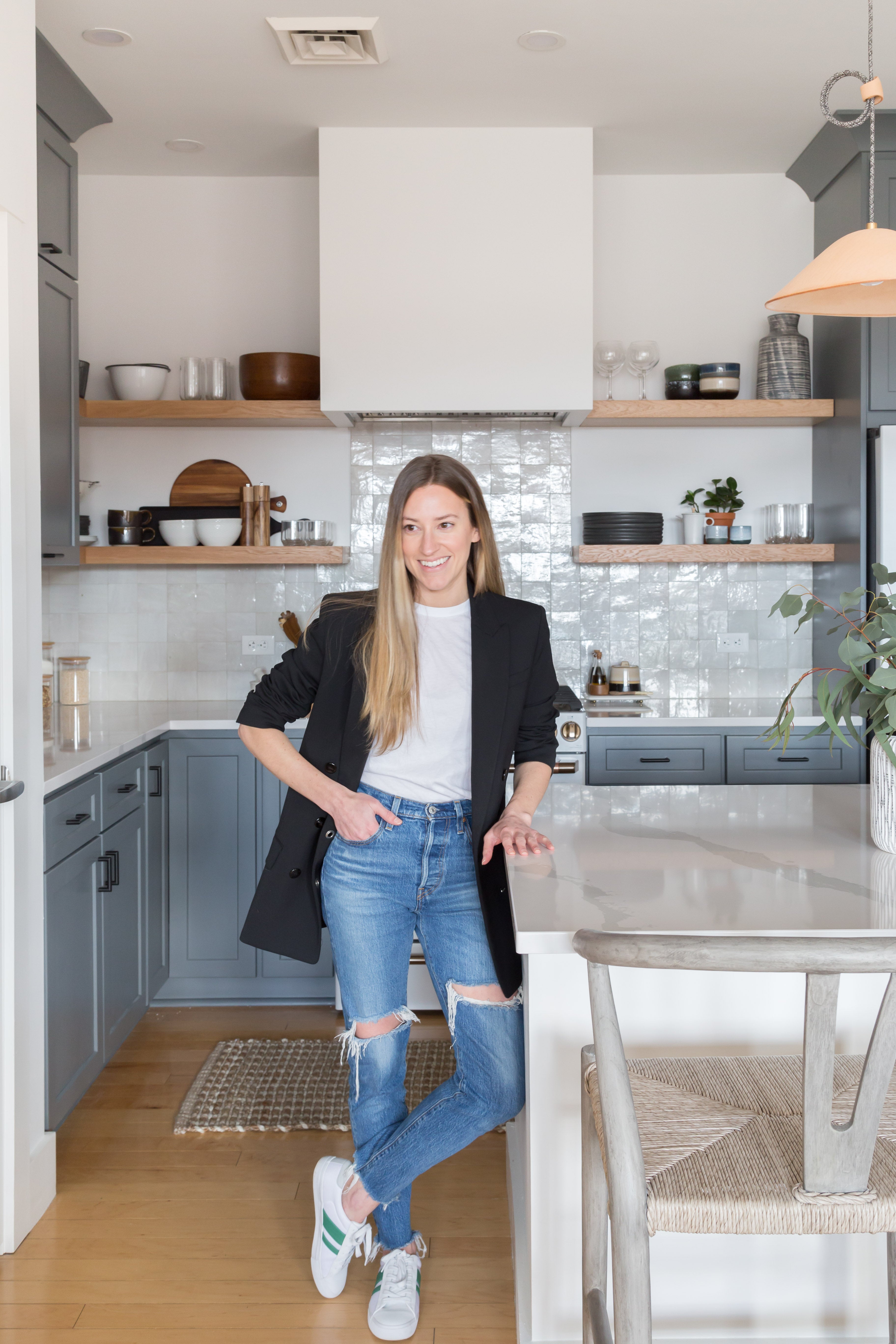The 50 States Project is a series of candid conversations with interior designers across the country about how they’ve built their businesses. This week, Burlington, Vermont–based designer Vanessa Elliott tells us about her approach to “respectful renovation,” why it’s important for her to switch gears between projects of different sizes and why she prefers not to stick with one aesthetic approach.
Did you always want to be a designer?
I would say subconsciously, yes—from a pretty young age, I had a pull toward that. A fun hobby for me was taking graph paper and drafting mock floor plans, which I just thought everyone was doing. I lived in the same house my whole life growing up, and my dad would always be doing projects on the house. I was so interested in what he was working on, and I still have relationships with some of the builders [he hired] because I was always asking questions about everything they were doing. I thought it was the coolest thing. So in hindsight, I think I was destined for this, but I didn’t know until much later.
Growing up, I had no idea that interior design was an actual career path, so I never even entertained that. I got my degree in public communications, then worked in marketing for several years. It wasn’t until I met my business partner, Adrienne Meyers, that I realized I could work in design.
How did the two of you meet?
She has a background in interior architecture—she went to one of the top interior architecture schools in the country and came from a much more formally trained background. And as soon as we met, it was kismet. We just instantly connected.
She had recently moved to Vermont with her now-husband and was working for a company designing custom closets, which is actually how we met. She saw my condo at the time and she was like, “How do you know about this Farrow & Ball color? How do you know about this type of rug? How do you know about this source for bedding?” I was like, “I don’t know, I just love design blogs.” And she was like, “You’re better than 98 percent of the people I graduated with. Let’s start a business and do this together.”
I knew I had this really strong pull toward design, but I think there was still a part of me that felt like, “Oh, you don’t know enough about that for it to be your career.” My dad was a doctor; I came from a family where you go to school for what you become—there was no, “Oh, you can just shift gears.” But once she empowered me and gave me that courage to start the business, I just hit the ground running, and it was immediately a perfect fit. I felt so comfortable. I surprised myself every day with how much I knew, and I finally felt like I was doing the right thing. And the two of us were so lucky to have the most amazing working relationship and friendship.
What did that early partnership look like?
In the early days, everything was split 50-50. We worked on everything together. I was certainly picking up a lot from her, and there were some things, like AutoCAD, that I couldn’t do at the beginning. But anything that I didn’t know yet, I learned, because I wanted everything to be completely equal.
Where did the early clients come from?
We were really starting from zero. I had grown up in Vermont, so I guess you could say I had some connections here, but none that ever manifested into any big projects.
Because of my marketing background, I came up with this plan: We were going to make these postcard-size flyers that had our picture on them and a really beautiful image on the back. I knew the really nice neighborhoods in the area, and I was like, “We’re just going to drive around and hand-write addresses on the postcards, and then we’re going to mail them out to all the houses.” On the card, we offered free 30-minute consultations, and the plan was to win them over in the beginning with these consultations. And we did. We got our first sizable project from that, and it was incredible. We’re now on our third project with that client.
We were taking on smaller jobs, too—hourly consulting things. If someone just needed help picking paint colors, we would go to their house and help them put together a paint scheme, or if someone needed help renovating a bathroom, we would do that. If someone needed help with a full main floor renovation, we would do that. If someone needed help sprucing up with pillows and accessories, we would do that too. No project was too small in the early days.
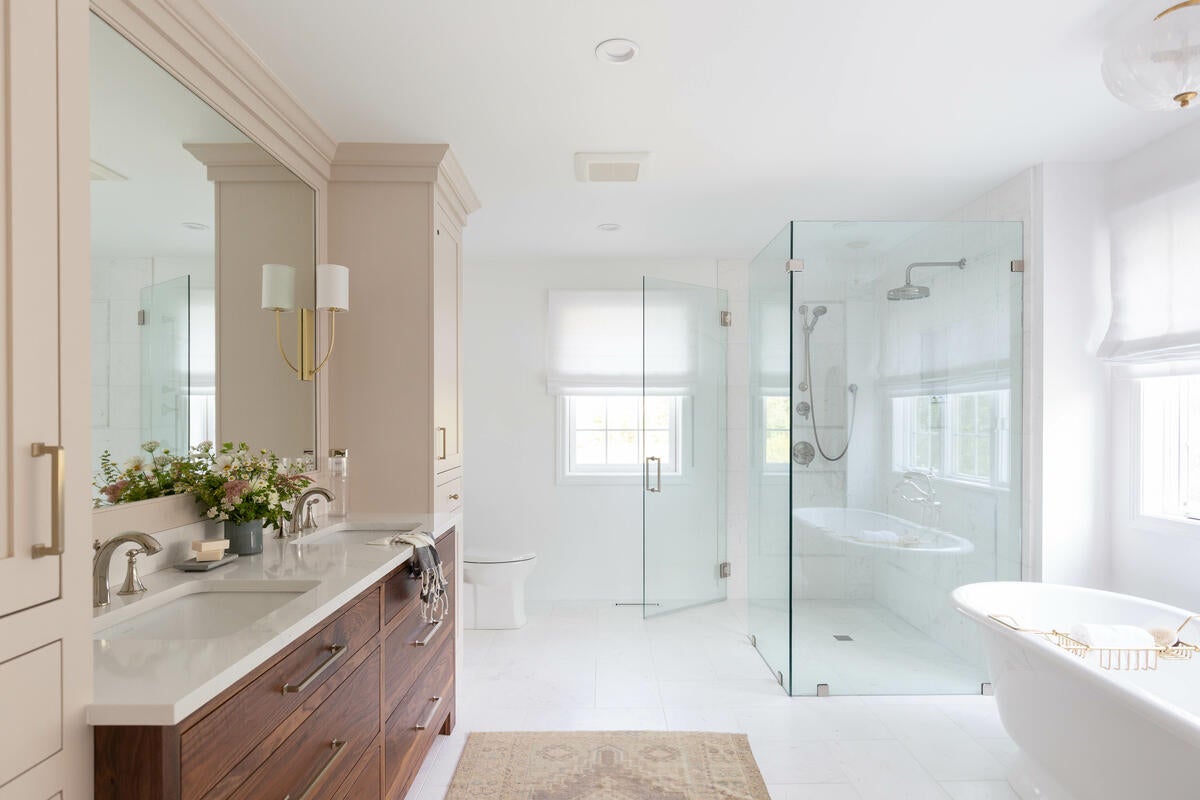
I know the partnership didn’t last forever. What changed?
We started the firm in 2015 and worked together for two years. Then Adrienne moved back to Kansas City to start a family with her husband, and from that point on, it was just me. I’ve been fully running the operation myself since then. Adrienne’s still one of my closest friends and the first person I go to for any kind of design advice, or if I hit a roadblock and I’m stuck on something. We’re really lucky to still have that relationship.
What shifted when it was suddenly just you?
That’s a good question, and I don’t know how much I’ve ever really reflected on that. The obvious thing in the beginning was that it was a lot more responsibility. If I had a vendor that I was really struggling with, there was no passing it off to the other person to be like, “OK, I’ve been good cop for seven emails; I need you to step in and be bad cop here.” With client communications, there was no more splitting any of it—everything fell on me.
There were a lot of upsides to it too. Everything was in my control; I could do everything exactly the way that I wanted to, and I could get some systems in place and start to think about hiring an employee, which I did in 2019.
What made you feel ready to take that step?
It wasn’t something like, “I’m going to flood the airwaves and post this job everywhere.” I had it in the back of my mind. I had a job description all written out, but I actually hadn’t even gotten to the point of posting the job yet. It just so happened that my now-employee, whose name is Ellen, reached out to me. I had been getting a couple of different inquiries from people who were interested in some kind of design assistant or project coordinator role, but Ellen’s cover letter, email and resume really stuck out to me. I interviewed her, and then I interviewed a couple more people who had reached out just to make sure I had talked to a few people. After speaking to her, she was definitely still my top candidate for the job, and it’s been a really great fit.
What was it about her or her skill set that made sense for you?
Her background is in event planning, and as someone who came from PR and marketing, I knew how many details go into event planning and that so many of those skills would translate well. As soon as I saw that she could manage and run events herself, I was like, “You will be perfect for this role.” And anything she needed to learn, I knew I could teach her.
Ellen does so many things. She manages all of our selection sheets—everything internal and client-facing—and tracks the selections we’re making for every single project. She helps manage all communication with builders and trades, keeping them up-to-date with every change and providing them with project binders that include spec sheets and detailed directives. She also attends every meeting with clients and helps with communication about shipping, logistics and scheduling. She also handles all of my project inquiries, which I am so grateful for—she has such a great sense of who’s going to be a good fit. She’s filtering out the projects that she doesn’t think are right, guiding people with smaller projects toward our hourly consulting services and presenting me with any projects she feels could be of interest.
That’s different than that 50-50 split from your early partnership. How did hiring her allow you to approach the firm in a new way?
Working this way allows me to focus a lot more on design, which is what clients want me to focus on. They don’t want to pay me to spend hours in a selection sheet, making sure it has the right picture and that the pricing is correct.
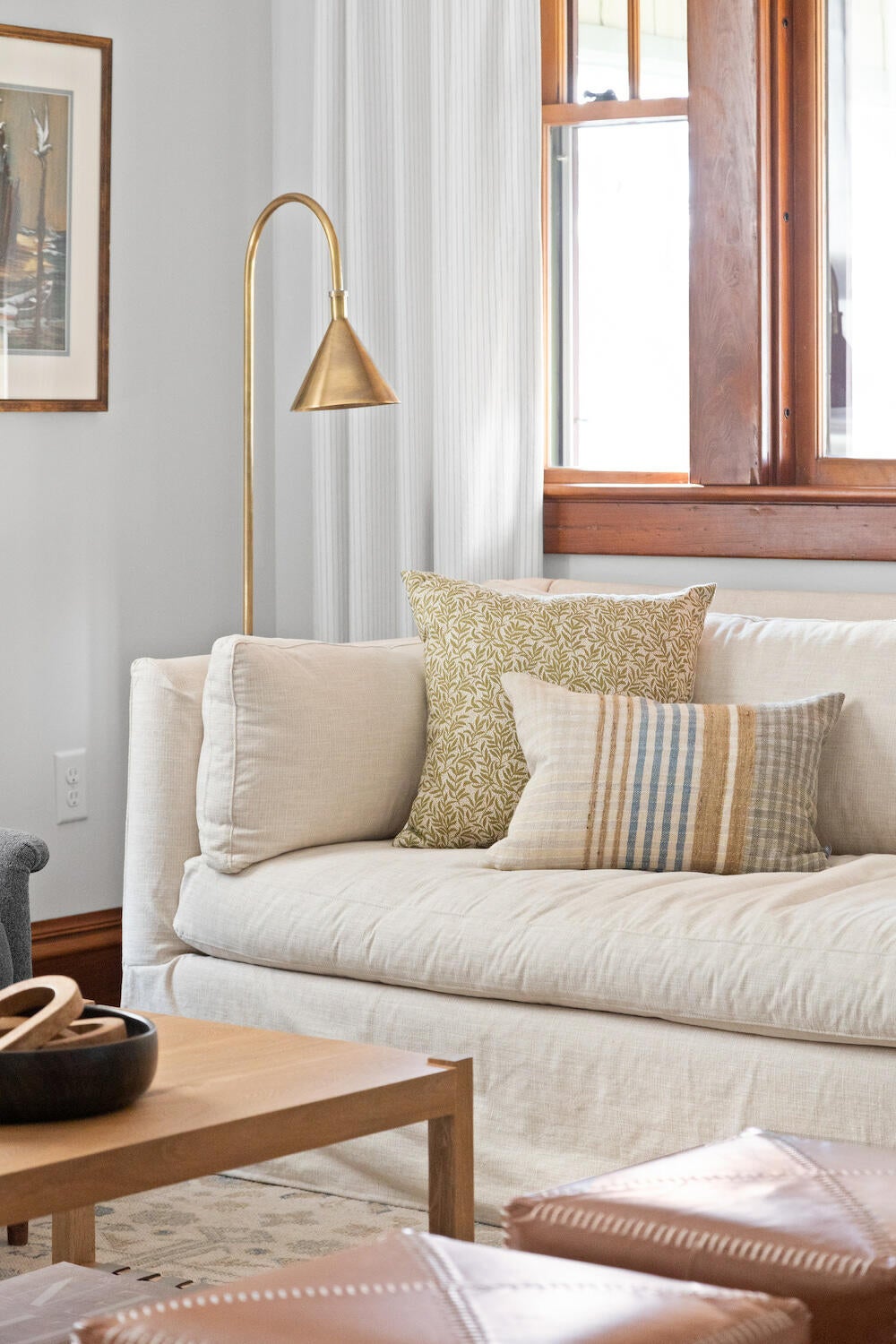
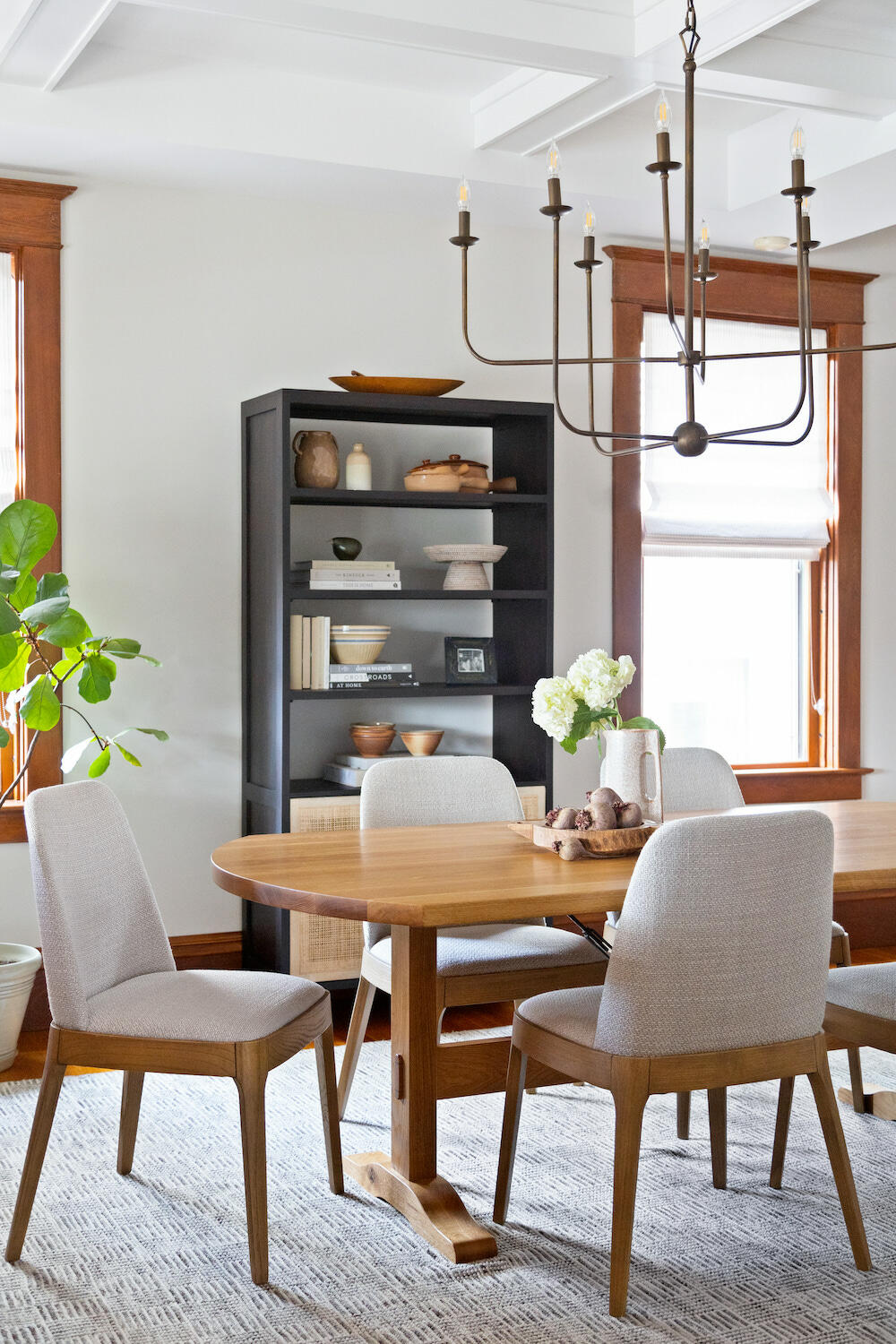
What is the most essential part of your process to ensure a project is a success?
Being incredibly organized. We keep a shared Google Drive with an internal folder that’s just for us, and a client-facing folder that the clients, builders and all of the trades have access to. Within that client-facing folder, we keep all of our design decks dated and organized. If we’re doing an entire home project, we keep it organized by room, because there are usually several design decks involved in each space. We also keep a detailed selection sheet in there, which serves as our approval sheet.
Now, not all contractors visit this folder, I will admit, so we make sure there’s always a printed binder on-site as well with everything up to date. But every now and then, a contractor will go directly to the client and say, “Remind me of this again—” and the client knows where that information lives. They can visit the paint sheet and say, “Our daughter’s bedroom is this color in this finish.”
What is a full plate for you today?
We have transitioned to taking on only what we consider larger-scale projects: new builds, large renovations, whole-home projects instead of single-room projects. We can fit those one-room jobs in here and there between the larger projects, but it really has to be the right fit, the right project and the right location.
For those larger projects, we’re probably doing three at a time maximum, and then we could have four smaller projects sprinkled in. I like that balance, because it can be nice to switch gears. Sometimes you can hit a wall with those really big multi-year projects, or you can get a little burned out with the decision-making and be looking for creativity. Having the smaller projects allows me to reengage in something else—to shift gears in my brain—and I find that it really helps.
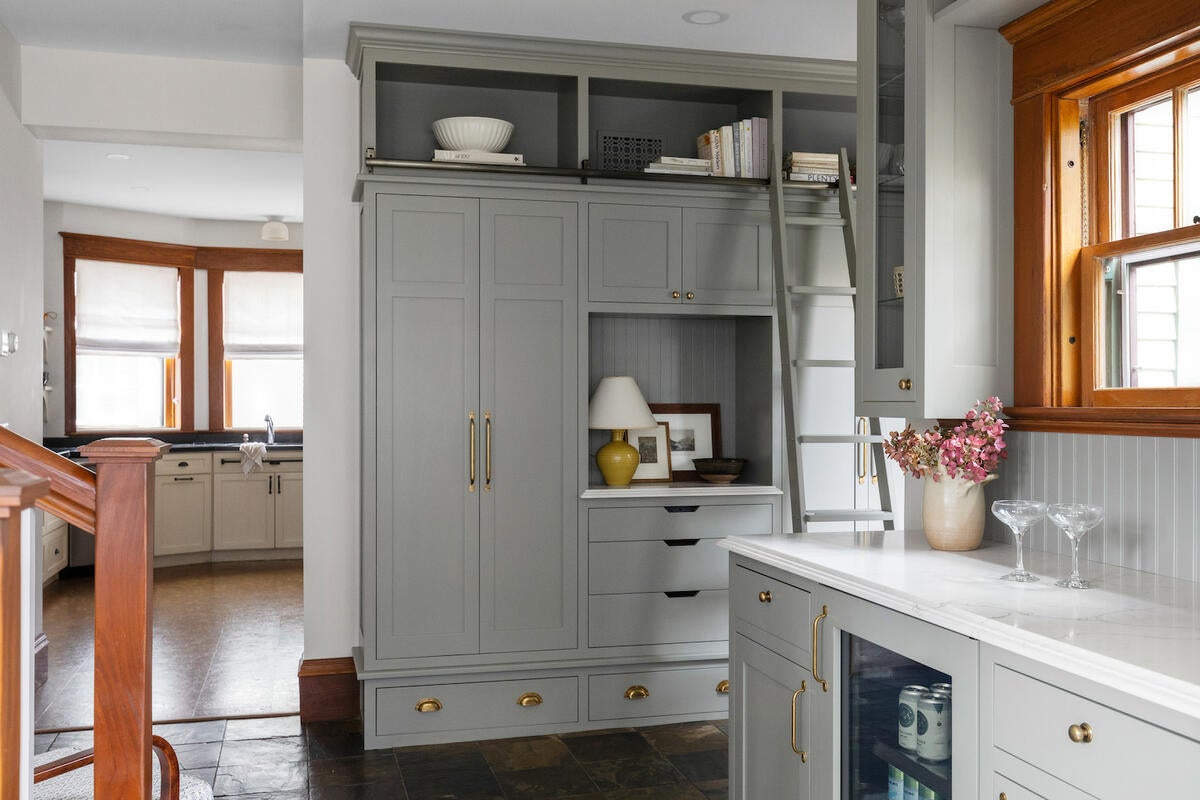
You grew up in Vermont and you’ve built your business there. How does that sense of place impact the kind of work that’s coming your way?
There’s a big interest in the preservation of older homes, and the majority of our projects are renovations of existing structures. A big part of the inspiration in our work comes from the homes themselves and the character and details of those homes. Even if we’re doing a full gut renovation, the clients may want to renovate the whole thing to make it work better for their life and to be a little more aligned with their aesthetic, but they still were drawn to that home because of its bones and architecture. I often start with, “What does the home say to me? What’s the tone? What’s the feel? What’s the view? What kind of light comes into the home?” All of those things are so important.
I try not to adhere to any one aesthetic. I think that can box you in. I know there are some big designers who have a clear aesthetic and I respect that—I think that’s incredible. But I love working on older homes, really restoring them in what I call a “respectful renovation” that is driven by the architecture and pays tribute to the character of the home, where we try to preserve as much of that as possible.
How do you shop?
We have probably well over 100 vendors we work with at this point, mostly all to-the-trade and wholesale vendors we’ve developed relationships with over the years. But that’s an ever-evolving list—there are some that just did not fare well through Covid, and we had to move on to someone else who was navigating that space better when we saw a bunch of issues. Taking trips to High Point Market helps with that, because we’re constantly finding new vendors we’re really excited about working with.

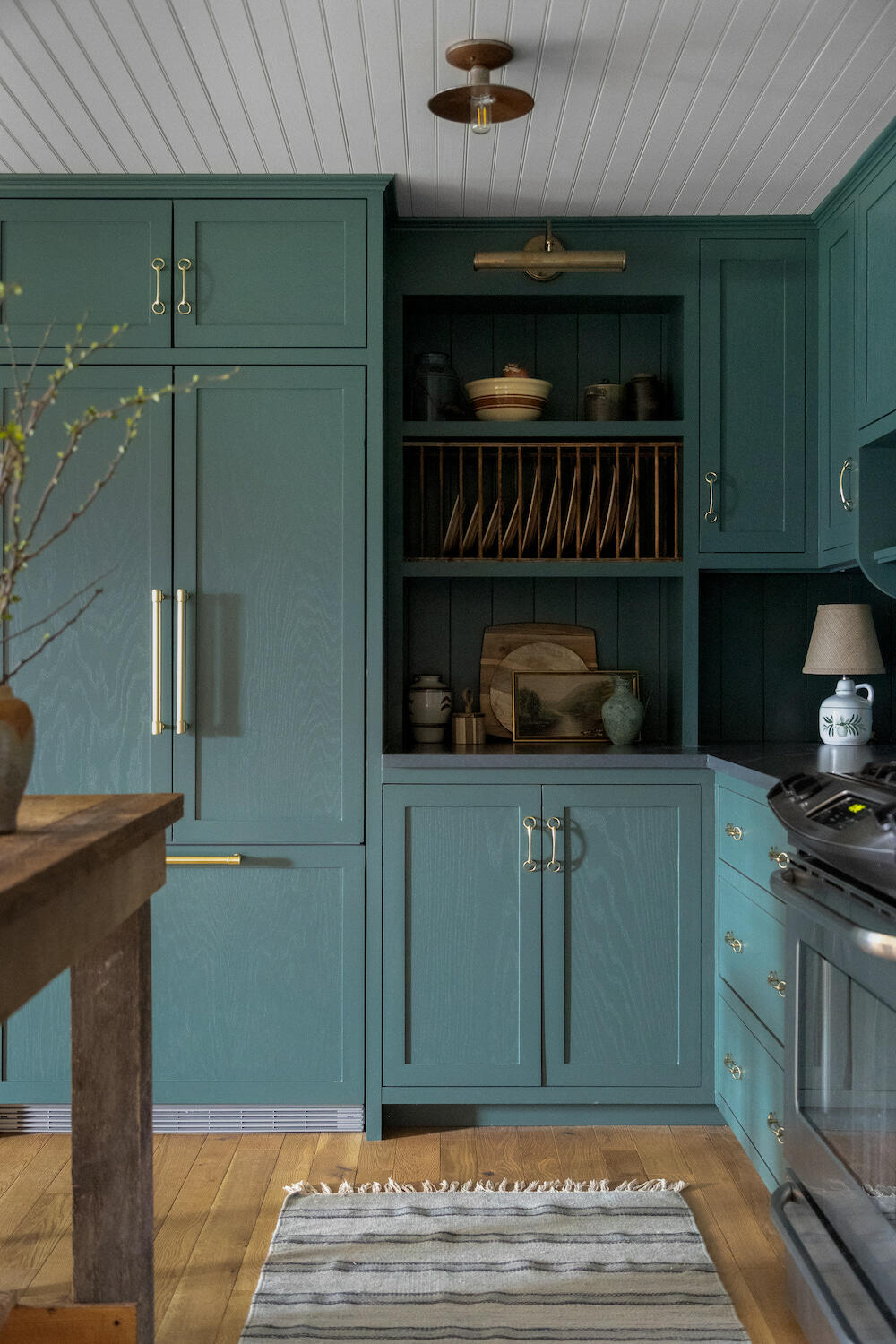
How have you approached billing for your work?
For smaller projects, we offer hourly consulting. Sometimes that’s someone reaching out to us and they’re like, “We just need one hour,” and there’s an hourly rate for that. I do several of those hourly consultations every month now, and those are super fun. I love going into someone’s home and helping them see the potential. It was always a running joke, actually—I used to house-sit or dog-sit when I was in college, and whenever I was staying at someone’s house, I would always rearrange their furniture. They’d come home and I’d be like, “I’m so sorry, but I really felt like this layout was more open and more X, Y, Z.” I’d say nine times out of 10, they were like, “Oh, this is incredible. We’re not moving it back. We love this.” And I get a little dose of that going into client homes and doing these consultations.
When I’m there, I call it a fire hose of information. I’m just like, “Here are sources. Here is what I think you should do. Here’s what I think you should source for this. Here’s where you should look for that. Here’s the dimension of the sofa you need.” I try to give them as much information as possible, and then it’s their job to go and execute those ideas. It’s fun for me to be able to connect with people on that level—and even if we can’t fully take on their project, to still be able to give them ideas. All of that is hourly.
For our larger projects, which are multi-year relationships, we’ve recently transitioned into a combination of a flat fee with an hourly component. Ultimately, the goal is to make it as simple for the client as possible. I’m open with them about everything—I want them to understand the process. I don’t want them to be stuck with some bill at the end where they’re just shocked.
How do you toggle between the flat fee and hourly billing?
The design process—so the whole schematic, conceptual design, all of that—is where we have the most control. I know that if we’re designing this office space, it’s going to take us X amount of hours for the design components, and I’m able to give clients an estimate of our hours for that piece of the project. We take that estimate and turn it into a flat fee.
But once we move into the construction phase, as far as the site visits, changes to the plans, installs, things like that—that we just don’t have much control over—I don’t know what type of contractor it’s going to be. Is it going to be more of a high-touch contractor, as we call them, that needs a lot of hand-holding and we have to be very involved? Or is it going to be more of a hands-off contractor who can take our plans and execute them at a high level? Before, I was trying to estimate those hours, and it was really working to our detriment. So that part of the process is now billed hourly.
Is markup on product also part of the business model?
It is, and it’s something that I like to be super transparent about. I think if it’s something you feel like you need to hide from the client, then maybe there’s an issue somewhere in your business. I feel confident in the skills we are able to provide and the services we offer to the client, so there should be no shame or fear discussing our markup.
We utilize a cost-plus markup for anything that’s wholesale. For the handful of things we buy from direct-to-consumer brands, we only mark up to the retail cost—I don’t believe in marking up beyond retail. Every so often, we purchase something that we don’t get a discount on, and in those cases we’re charging the client what we paid for the item. And there has never been pushback on any of it. When you can explain those things in detail and show the clients that we are on their team—we’re working with you on this and we obviously want to make a fair living, but we’re not trying to fleece you—they’re OK with it.
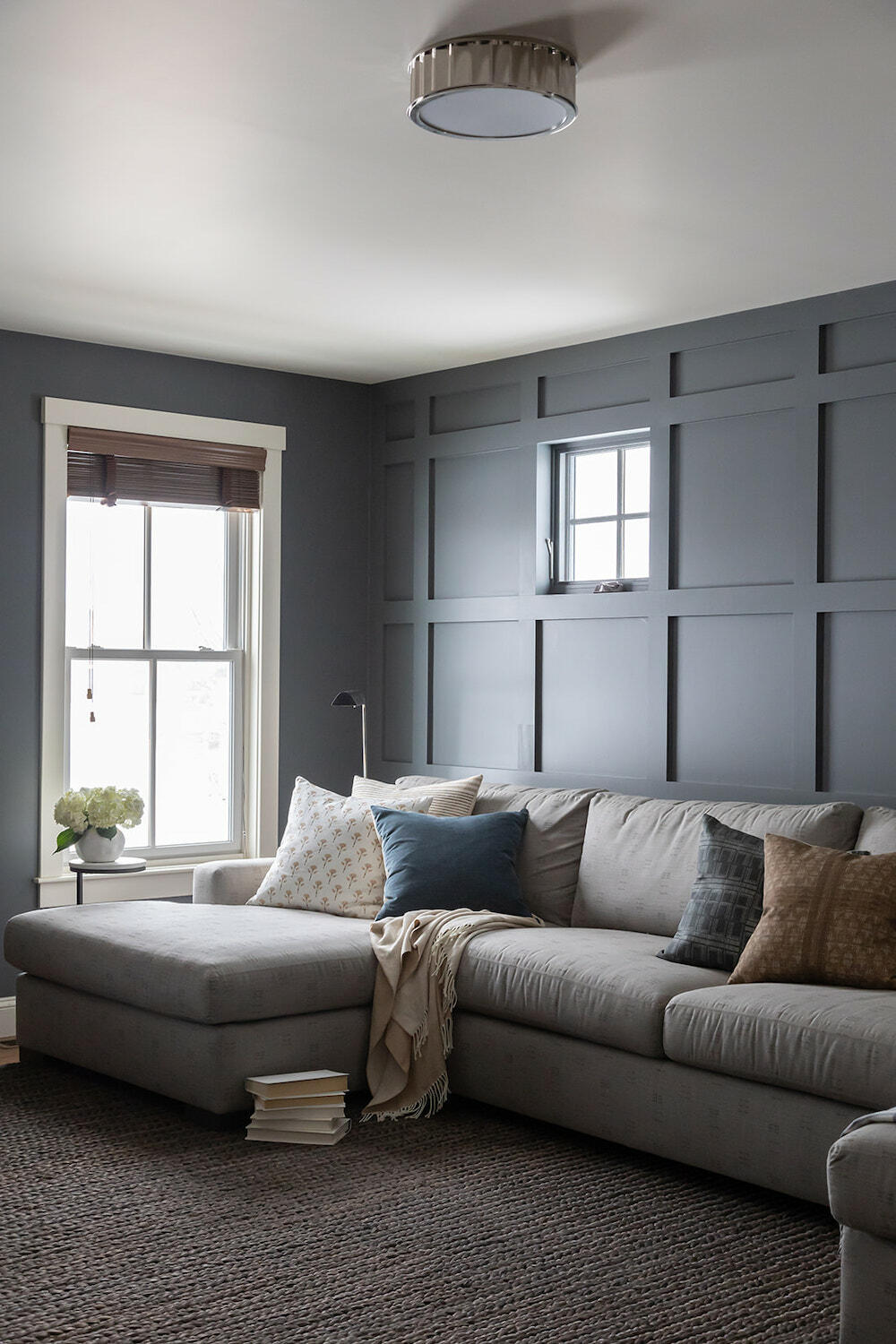
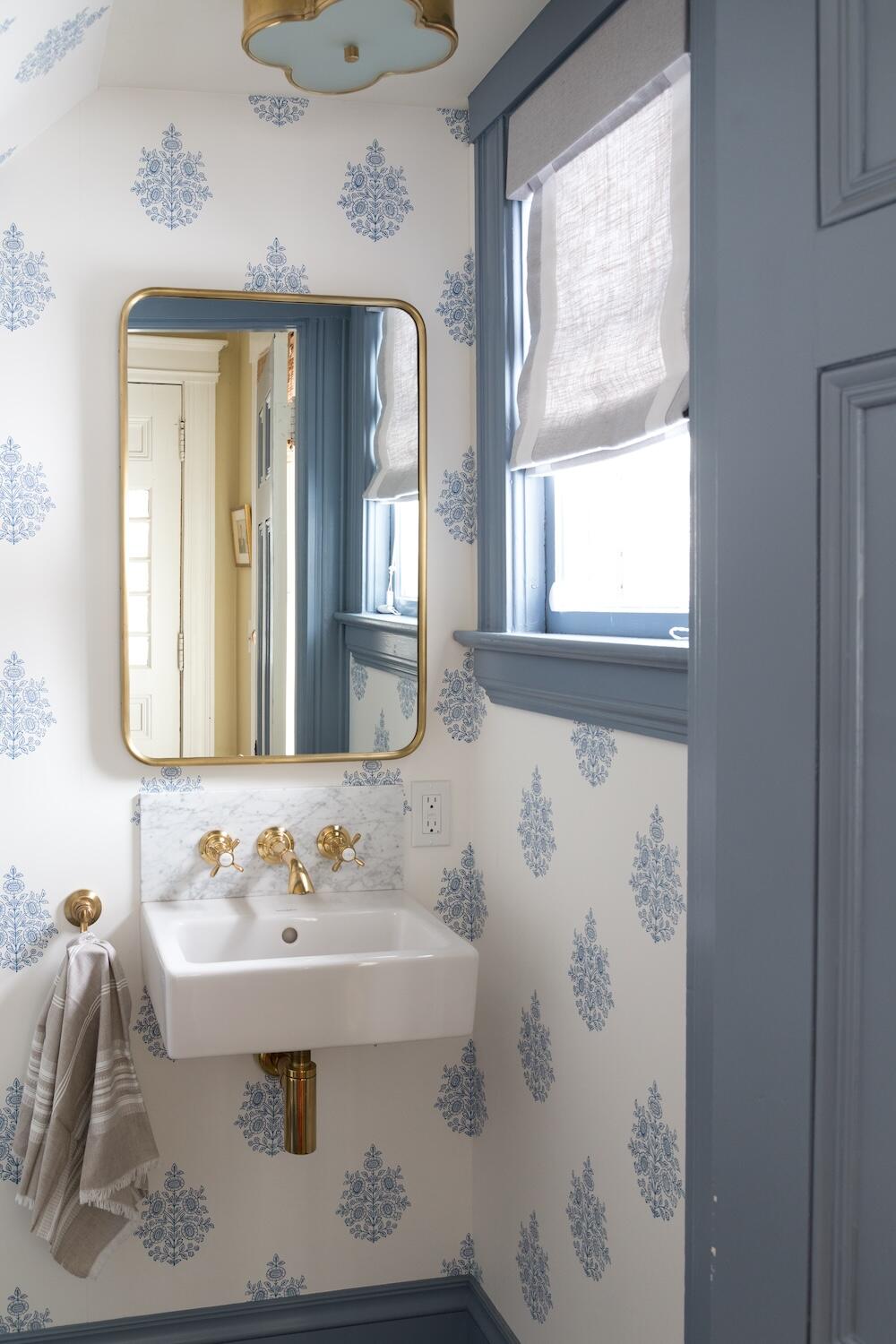
When you look back, what is the biggest thing that you wish you had known when you started the business?
I think it would’ve been so hard to have this in the beginning, but I’ve seen the way that my confidence has grown. I was really self-conscious in the beginning about not having formal training, and I lacked confidence to pitch my ideas to clients with a level of certainty—like, “Trust me on this; you will not regret this,” or “I know I’m pushing you out of your comfort zone, but you will love this in the end.” I’m much better at doing that now. Back then, I would sometimes let clients talk me out of certain things because they couldn’t see it. Now I know to trust my instincts.
Where do you see opportunity when you look ahead? How do you hope the firm continues to evolve?
That’s a great question, and honestly, one that I struggle with. Our workforce here in the United States is structured around [a culture of] more, more, more—you always have to be growing and building and hiring and taking on more projects and expanding your workload. But I try so hard to really check in with myself: Is that something that I really want, or is that something that has been ingrained in me to want? It’s a constant push-pull.
I’m happy where I am, and we have such a good rhythm where we are right now. But I could also see us growing a little bit—maybe bringing on another team member who’s more design-focused to take on some of those CAD drawings, which are very time-intensive. One day I’m like, “I want to have 10 employees and be huge,” and then the next day I’m like, “This is great where I am.”
What does success look like for you?
I think this has changed over the years too. Starting out, I had that mentality of, “Every year, we have to grow—there needs to be more employees, maybe an office space or a retail store, maybe this, maybe that.” Instagram is very helpful in making you feel like you don’t have a big enough portfolio, or like you’re not taking on big enough projects. But when I catch myself thinking that way, I try to reframe it as, “This is just a beautiful, inspirational image.” It’s not about “I should be doing that” or “I should be there.”
The longer I do this and the older I get, the more I realize that success is less about growth and more about everyday happiness. Was what I did today fulfilling? Do I feel balance between my work and my life? Am I happy going to work? Obviously there will always be days or parts of days that are like, “Oh man, I wish I wasn’t doing this right now,” or I don’t love this part of my job. But overall, I’m so excited to go to work every day. I love what I do so much, and I try to not get too far away from that.
To learn more about Vanessa Elliott, visit her website or find her on Instagram.
















